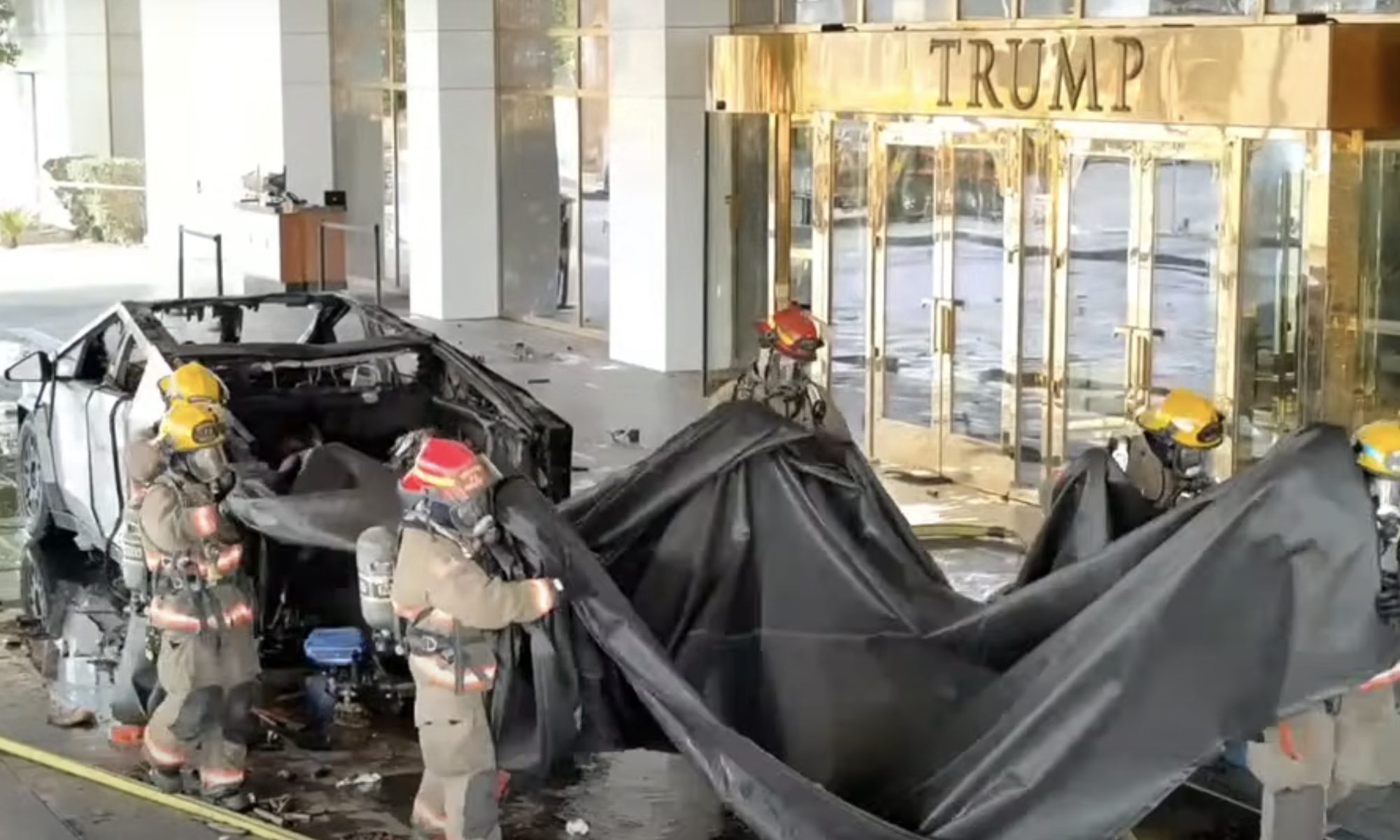

An Army Special Forces soldier shot himself before the Tesla Cybertruck he was driving exploded in front of the Trump International Hotel Las Vegas on New Year’s morning, officials said Thursday.
Master Sgt. Matthew Alan Livelsberger, 37, was in his 19th year as an Army Green Beret, service officials confirmed Thursday, and had earned a Bronze Star with Valor among other combat awards. Livelsberger enlisted in 2006 and rose through the ranks of Special Forces to the position of a team sergeant with 10th Special Forces Group, based at Fort Carson, Colorado, the Army said.
Las Vegas Police Department Sheriff Kevin McMahill said at a press conference that authorities were confident that Livelsberger was the driver of the Cybertruck, but noted that Las Vegas police did “not have confirmation 100%” that the remains inside the truck belonged to Livelsberger because they were “burnt beyond recognition.” McMahill cited a military ID, passport, two semi-automatic handguns, iPhone, smartwatch and credit cards belonging to Livelsberger that were found in the truck.
Police also linked Livelsberger to the truck with pictures and other tracking information from along the route they say Livelsberger drove to Las Vegas after renting the vehicle in Denver, Colorado on Dec. 28. Police traced the truck’s path using electric vehicle charging stations Livelsberger appeared to have used along the way.
“We still have only ever seen him in this vehicle,” McMahill said. “We’re not aware of any other subjects involved in this particular case.”
Officials also identified two tattoos on the remains that were similar to those on Livelsberger’s arm and stomach.
Not a ‘sophisticated’ bomb
Officials found mortar-style fireworks, gasoline cans and civilian-style explosive shooting targets in the back of the truck, an official with the federal Bureau of Alcohol, Tobacco, Firearms and Explosives said. Though dangerous, those items did not appear to be well-conceived building blocks of a large-scale bomb.
“The level of sophistication is not what we would expect from an individual with this type of military experience — that most of the materials inside that Tesla were to help fuel a greater explosion,” said Kenneth Cooper, assistant special agent in charge for ATF’s San Francisco division. “But it’s too early to answer any questions as if there was sophisticated connectivity to those components to make it ignite in the way that it did.”
The Las Vegas explosion was the second episodes of deadly and so far unexplained violence on U.S. soil in the early hours of Jan. 1. Shamsud-Din Bahar Jabbar, a former active duty and Reservist soldier, drove a rented pick-up truck through a crowd on Bourbon Street in New Orleans, Louisiana just after 3 a.m., killing at least 15.
Just hours later, Las Vegas police received a report that a Tesla Cybertruck was “fully engulfed in flames,” in the valet area in front of the Trump International Hotel Las Vegas located just off the Las Vegas Strip.
But at Thursday’s press conference, McMahill pushed back on misinformation about the explosion — some at least partially endorsed by Elon Musk — and connections between the two incidents. McMahill said both soldiers had spent time at Fort Liberty, North Carolina — which was then Fort Bragg — during their career but that there was no indication the two soldiers ever met, served in the same unit or at the same time at the North Carolina base, which is the Army’s largest by population. McMahill also said that although both served in Afghanistan, there was also no evidence they crossed paths while deployed.
“We’re very well aware of all of the things that are going around on social media, but that’s just the way we’re going to conduct this investigation,” said McMahill. “I’m also confident to tell the Las Vegas community and this great nation that we don’t believe there’s any further threat from this subject, or anybody associated to him here in Las Vegas with that.”
Almost two decades in special operations
Livelsberger’s personal LinkedIn page indicates he qualified as a Special Forces communications sergeant and, later, as an intelligence operations specialist after joining in 2006. He had taken over the leadership position as an operations sergeant — known among Green Berets as a team sergeant — less than two years ago. Team sergeants are the senior enlisted leaders of a 12-man Special Forces team, responsible for the day-to-day business and combat-readiness of the team.
According to the Army, Livelsberger originally enlisted in 2006 as an 18X, the designation for a Special Forces candidate when they enter the Green Beret training pipeline. He served in the active duty Army from January 2006 to March 2011. Livelsberger then joined the National Guard from March 2011 to July 2012. During this time, according to Livelsberger’s LinkedIn profile, he worked as a hyperspectral imaging integrator for General Dynamics where he engineered and deployed with the company’s “Lightguard Minotaur” system.
Livelsberger returned to active duty in December 2012 with an assignment to the Army’s Special Operations Command, or USASOC, which oversees nearly all Special Forces units. According to his LinkedIn, his most recent job was a remote and autonomous systems manager.
“USASOC is in full cooperation with federal and state law enforcement agencies, but as a matter of policy, will not comment on ongoing investigations,” officials said in a statement.
The latest on Task & Purpose
- Special Forces soldier dies in non-combat incident at Eglin range
- A Marine’s disciplinary record from 100 years ago reveals rank-and-file life as much the same
- Navy shoots down its own F/A-18 in Red Sea fight
- The Coast Guard is building up its Arctic fleet
- Coast Guard pilot receives top flying honor for helicopter rescue
